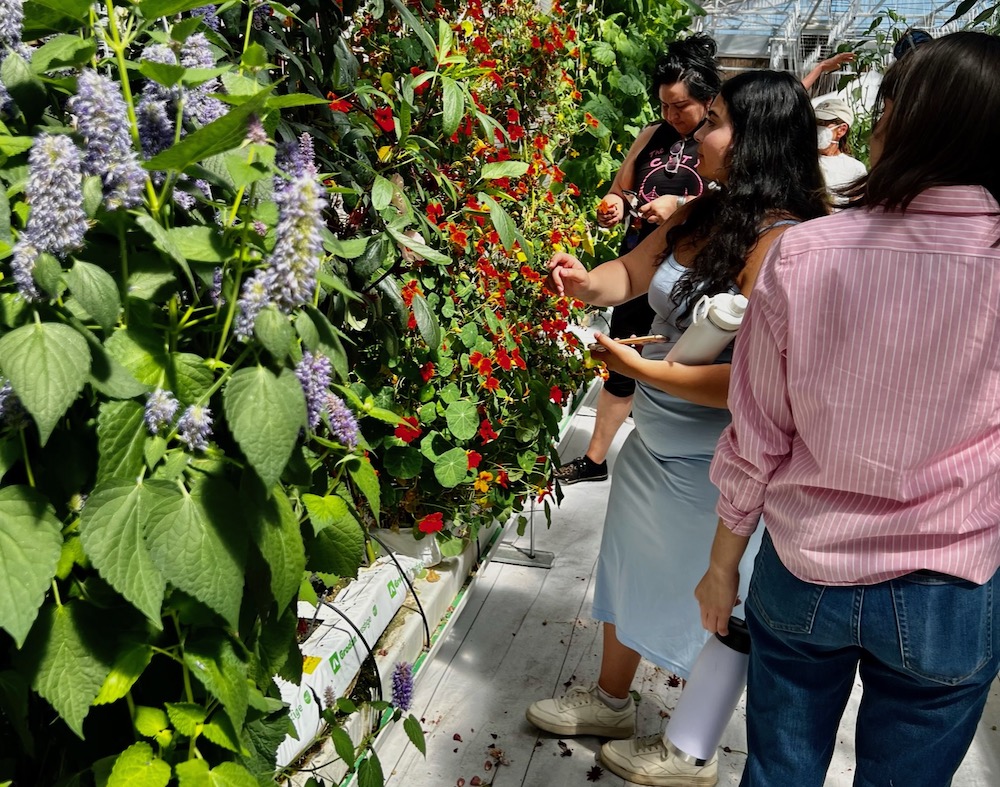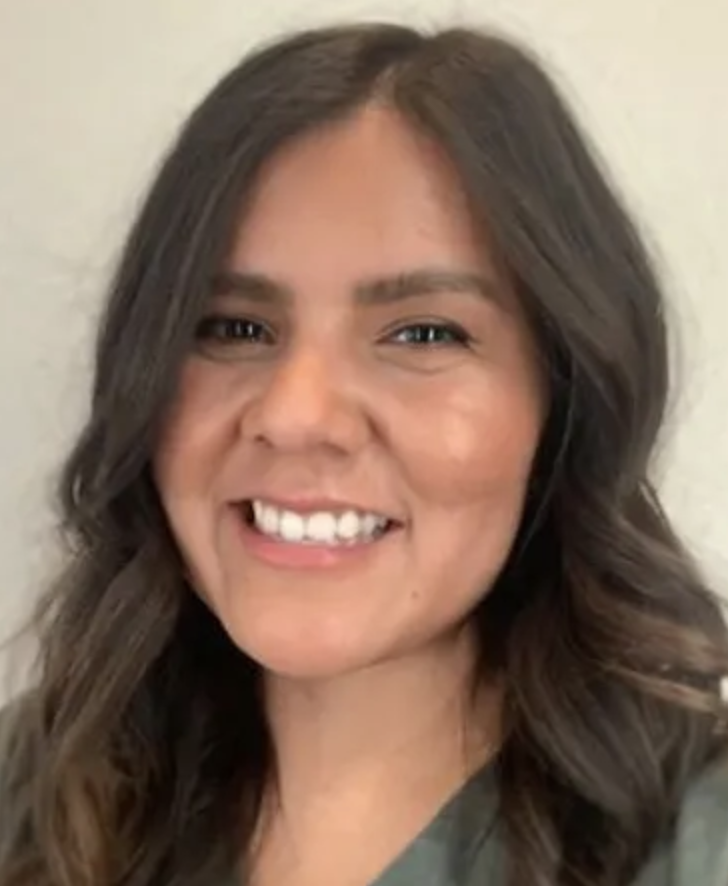
- Details
- By Chez Oxendine
- Food | Agriculture
Growing up on the Navajo reservation, where access to water has been historically challenging, Chantel Harrison had a profound awareness of the obstacles associated with farming.
While attending the University of Arizona, Harrison dove deep into controlled environment agriculture, employing technologies such as greenhouses and hydroponics. This approach aims to establish controlled growing environments, mitigating the impact of unpredictable weather patterns and disasters induced by climate change.
Harrison's inquisitiveness led to the establishment of Indigeponics, a nonprofit dedicated to promoting controlled environment agriculture and its transformative potential for individual growers, communities, and tribes. It’s an intersection that hasn’t otherwise been fully developed, Harrison told Tribal Business News.
 Chantel Harrison, Indigeponics“Within institutions that have agriculture and controlled environment agriculture, it's kind of just a focus on how to optimize growing specific crops that are mostly high producing: tomatoes, cucumbers, strawberries, and lettuce,” Harrison said. “Those are all very nutritious veggies and fruit that we knew, but there was a lack of opportunities to explore other foods that could be as successful as these typical products grown in a greenhouse.”
Chantel Harrison, Indigeponics“Within institutions that have agriculture and controlled environment agriculture, it's kind of just a focus on how to optimize growing specific crops that are mostly high producing: tomatoes, cucumbers, strawberries, and lettuce,” Harrison said. “Those are all very nutritious veggies and fruit that we knew, but there was a lack of opportunities to explore other foods that could be as successful as these typical products grown in a greenhouse.”
The first step for Indigeponics was utilizing support from the University of Arizona for a demonstration greenhouse, where experiments got underway for growing protein sources, such as green beans, and other traditional Indigenous foods, like huckleberries and corn.
Harrison and her group worked with a Native seed searching operation in Tucson to secure some of the necessary seeds, and began experimenting in the greenhouse. The goal was to determine what could or couldn’t be grown in a greenhouse environment. Pumpkins, for example, were out —the group ended up accidentally roasting some of their provided seeds, Harrison said.
Huckleberries grew, but they didn’t taste as good as ones grown outside, Indigeponics discovered. The important thing was figuring out they could be grown in an indoor environment, however, Harrison said.
“The exciting part of this type of work is seeing things grow and figuring out how to work with them,” Harrison said. “I think we did a really good first step in showing people this is successful.”
Eventually, the University of Arizona support concluded after Harrison graduated. The group has now moved on to securing support and partnership for getting a greenhouse of their own in the Phoenix area. In the meantime, they’ve begun holding workshops and building community among potential tribal partners in sharing the good word about CEA. There’s also a planned series of videos underway for providing wider informational support.
Ultimately, Harrison wants tribes and other communities to see the value in being able to reliably produce crops of not only leafy greens and fruits traditionally grown in greenhouses, but Indigenous foods for both health and ceremony, she said.
“The goal of the first step was to have a space and demonstrational greenhouse that Indigenous communities could come and see and interact with and maybe spark ideas to use CEA in some way,” Harrison said. “It can be very basic in terms of having a small system growing on a window sill, or if tribes have the funding and the support, to establish a greenhouse to grow crops for the community or revenue and economic development.”
Harrison makes the case for the use of greenhouses on the Navajo Nation reservation, for example, in a bid for both economic development and food system stability. She pointed to having year-round greenhouses as a way to ensure more jobs are full-time rather than seasonal, and could also provide more stable feed reserves for the Nation’s considerable cattle and animal products sector.
Then there’s climate change. Controlled environment agriculture can hedge against increasingly volatile weather patterns and natural disasters, Harrison said.
“I think we did a really great first step in showing people that this is successful, and given that there are many climate challenges that many Indigenous communities throughout Turtle Island are facing, greenhouses can complement traditional production. We really wanted to encourage people to kind of see how each production method could be utilized to efficiently and respectfully use our natural resources for our communities.”
Things are moving on the greenhouse front, and Indigeponics’ work was exciting enough to earn Harrison a spot in the Indigenous Communities Fellowship through MIT Solve, a program dedicated to supporting technological solutions for community problems. In the meantime, they plan to expand their educational efforts, and continue doing outreach, she said.
“We're still focused on increasing food security and empowering communities through education,” Harrison said. “The big goal is to have a teaching greenhouse, a production greenhouse, an education center where individuals can come look into this and feel confident in looking up the research and knowledge we provide. That's what I'm excited about — being back in the greenhouse.”
